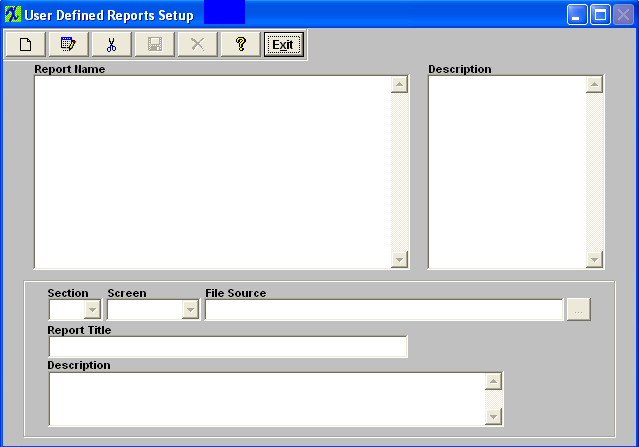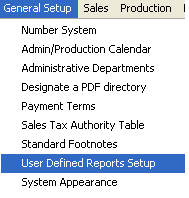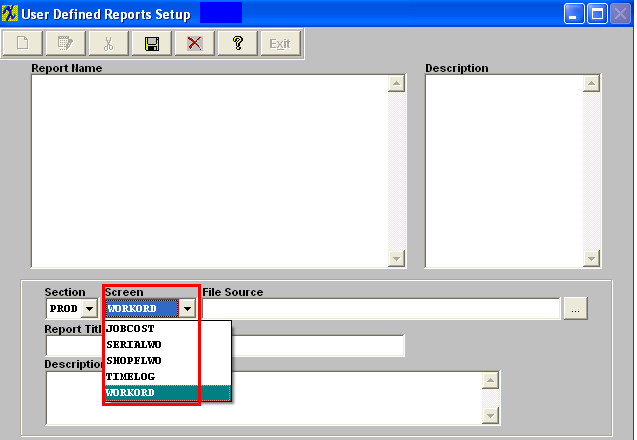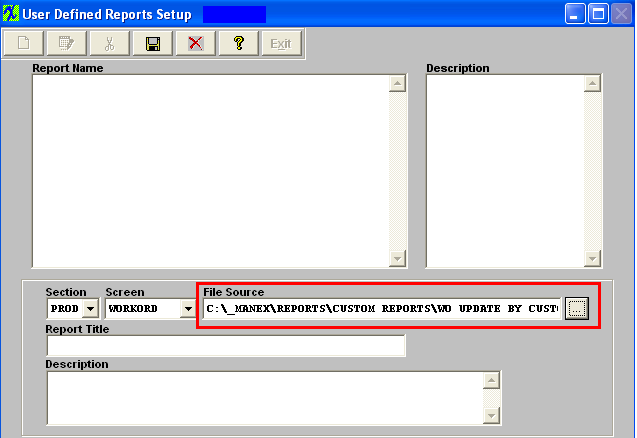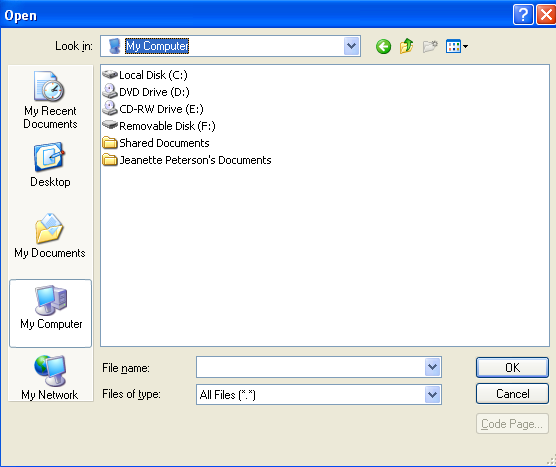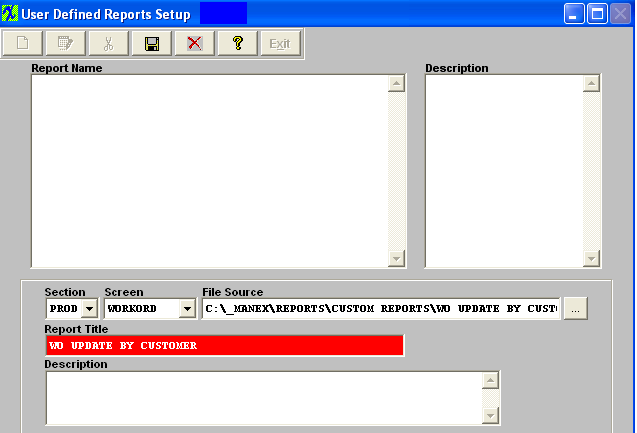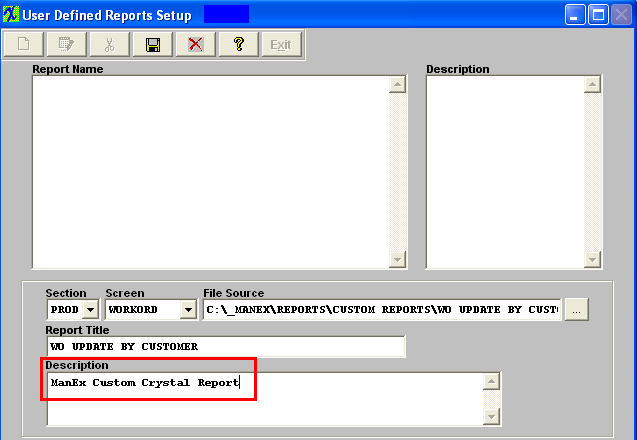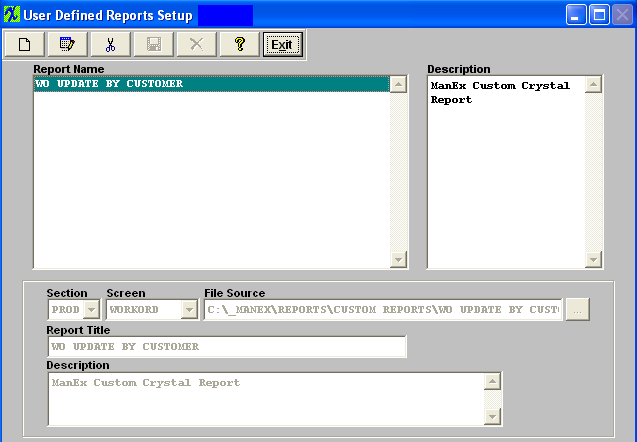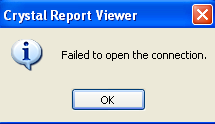| 1. User Defined Reports Setup |
| 1.1. Prerequisites for User Defined Reports Setup |
A Crystal Report Interface is available. This function allows the user to view any custom Crystal Report that has been compiled into an Executable and loaded into the "User Defined Report Setup" screen. WITHOUT having to have any Crystal Report software loaded on this machine.
To view the Custom Crystal Reports once they have been linked in ManEx user must have the VFPODBC Drivers installed. For further detail on how to install these drivers see Article #3072 .
We are currently using CR XI Developer, but our new Library files should work with previous versions. You no longer need to compile your reports using Crystal Reports Designer software. You can now attach your Crystal Report in the User Defined Reports Setup and run them in ManEx. PRECAUTIONS WHEN USING CRYSTAL REPORTS AND CRYSTAL REPORT DESIGNER WITH THE MANEX DATABASE ManEx does not provide training on the use of Crystal Reports software. It is not our product. To arrange for training, call Seagate Software at 1-800-877-2340. If you do not have anyone on your staff who can do the reports and you want an outside designer, there are independent software consultants who do this type of work. In the Silicon Valley area, one of these consultants is Wisdom Technology. The number is 408-997-7165. The contact’s name is Bob Shatzer. ManEx can provide you or your designer with the database information for the reports you are trying to create. We will charge you phone support hours your company purchased for the time we spend. Complete the attached worksheet and "Mark as Completed RoadMap Section B Item 1-h" before continuing the setup.
Rights to "System Setup" in the System Security module. Users with "Supervisor Rights" will automatically have access.
|
| 1.2. Introduction for User Defined Reports Setup |
This module will allow each end workstation the ability to view any customer Crystal Report that has been compiled into an Executable and loaded into the "User Defined Report Setup" screen. ManEx includes the Crystal Reports viewer so custom reports created in Crystal Reports can be controlled and distributed through the software, WITHOUT having to have any Crystal Report software loaded on that machine. ManEx has several Crystal Reports available that allow users to modify the report according to their needs. These reports can provide completion percentage information, AVL availability, and production notes.
See Article #3160 for some Possible Custom Report Query's.
|
| 1.3. Fields & Definitions for User Defined Reports Setup |
|
1. Crystal Reports must NOT be designed using "live" MANEX DBFS tables. Data will be corrupted in MANEX if any of the tables used for the design are accessed and changed while the design is in progress. To use Crystal Report Designer, create a copy of the DBFS and use the copy to design the report. 2. MANEX has no reason to believe that running a previously designed Crystal Report using live MANEX files will cause any problems. It does not matter if the report was designed using Crystal Report Designer or written as a custom executable.3. However, when using Crystal Report Designer or running a pre-existing Crystal Report, the user's workstation should be using "absolute" NOT "relative" paths to the DBFS files in use (ie. X:\Manex\DBFS\xyz.dbf NOT \\Manex\DBFS\xyz.dbf), where “X” is the absolute drive letter. Therefore, workstations setup with shortcuts to MANEX using relative addressing (for security reasons*) shouldn't be used to run Crystal Reports.
* Normally MANEX suggests that users use the MANEX shortcuts with relative addressing (not mapped to the server) to keep users from accessing the MANEX Server files in Windows Explorer. 4. If you accidentally corrupt the MANEX DBFS files using Crystal Report Designer or relative addressing, get all users off of MANEX and reindex TWICE. The first time clears the incorrect End of File table and the second time writes a corrected index. So in conclusion, as long as you don't design on the live database and you use "absolute" mapping to the server, using Crystal Reports to look at the live data after the report is designed should not be a problem.
|
| 1.4. How To ..... for User Defined Reports Setup |
| 1.4.1. Setup the User Defined Reports | |||||||||||||||||||||
|
The following screen will appear:
When you visit the applicable module, the report you created will appear in the Reports Selection window, as illustrated:

1. Crystal Reports must not be designed using "live" ManEx DBFS tables. Data will be corrupted in ManEx if the any of the tables used for the design are accessed and changed while the design is in progress. To use Crystal Report Designer, create a copy of the DBFS and use the copy to design the report.
3. However, when using Crystal Report Designer or running a pre-existing Crystal Report, the user's workstation should be using "absolute" not "relative" paths to the DBFS files in use (ie. X:\Manex\DBFS\xyz.dbf NOT \\Manex\DBFS\xyz.dbf). Therefore, workstations setup with shortcuts to ManEx using relative addressing (for security reasons*) shouldn't be used to run Crystal Reports.
* Normally ManEx suggests that users use the ManEx shortcuts with relative addressing (not mapped to the server) to keep users from accessing the ManEx Server files in Windows Explorer. 4. If you accidentally corrupt the ManEx DBFS files using Crystal Report Designer or relative addressing, get all users off of ManEx and reindex TWICE. The first time clears the incorrect End of File table and the second time writes a corrected index.
So in conclusion, as long as you don't design on the live database and you use absolute mapping to the server, using Crystal Reports to look at the live data after the report is designed should not be a problem.
|
| 1.4.2. Setup the ODBC for Crystal Reports |
Check setting for an ODBC data source, which is usually found under:
Start > Programs > Administrative Tools> Data Sources(ODBC), or Start > Settings > Control Panel > Data Sources (ODBC). If you cannot find it under either of these locations you may want to go to the "Start" and do a search:
 To download and run the
Enter the "System DSN" tab:
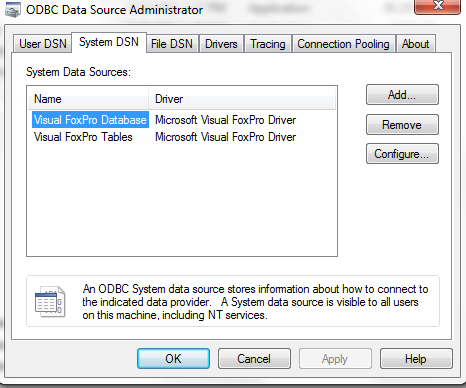 Click “Add” and you will see the New Data Source wizard, select “Microsoft Visual FoxPro Driver”, and click “Finish”
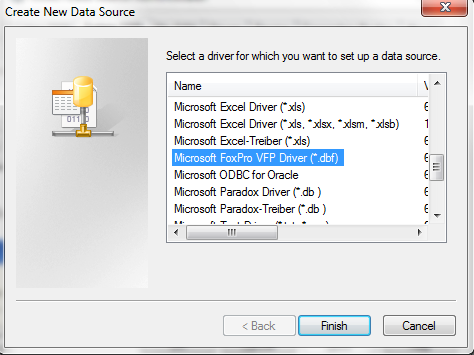 ODBC Visual FoxPro Setup pops up. Enter a name and description. The Database type should be “Visual FoxPro database (.DBC), and you should select “Manex.DBC” in server Manex DBFS folder.
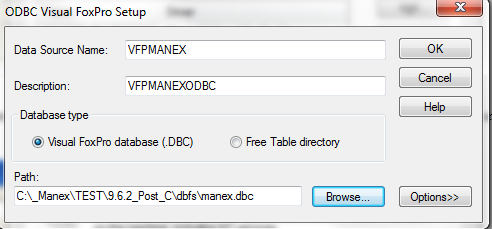 Depress OK, the setup process is complete and the new file should display in the ODBC Data Source Administrator/System DSN.
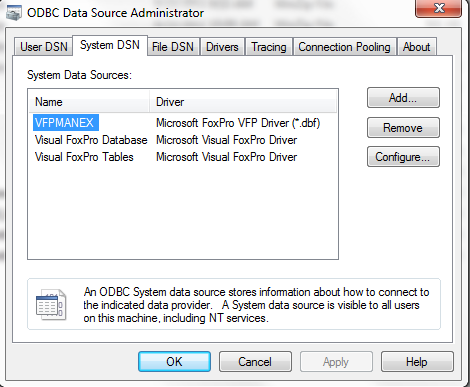
|
| 1.4.3. Custom Crystal Reports Created by Manex |
The following Crystal Reports have been designed by ManEx. These Crystal Reports are 'AS IS" and any desired modifications would be up to the individuals. These are some examples on how we intended the CR's to report data.
|
| 1.4.3.1. WO Shortage Report |
Select the WO Shortage Report - the following screen will appear:
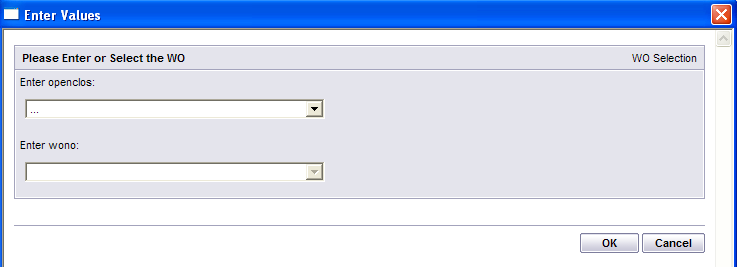 Select the WO Status - Closed, Rework Firm, or Standard
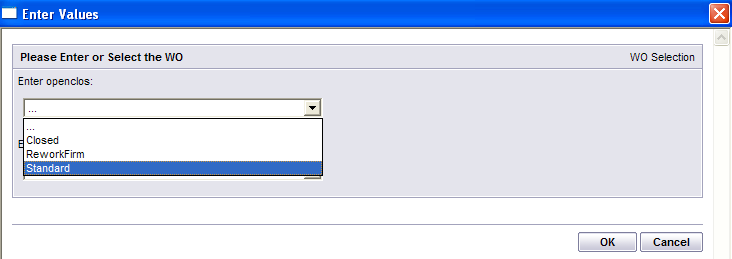 Select the WO Number _ the Work Order Number and Product Number will appear:
 Depress OK and the following Report will be displayed:
 |
| 1.4.3.2. WO Update by Customer Report |
Select the WO Update by Customer Report - the following screen will appear;
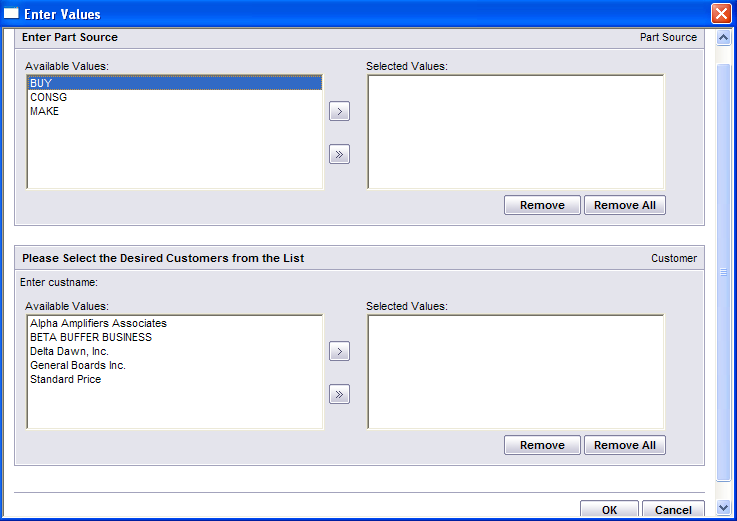 Select the Part Source and Customer by highlighting your selection and pressing the ">" to select all press the ">>"
Depress OK and the followng Report will be displayed to the screen:
 |
| 1.4.3.3. WO Schedule & WIP by Customer Report |
Select the WO Schedule & WIP by Customer Report
The first screen that will appear is the Enter Value Screen, select How you want to Orient the WO Status on the Shop Floor  Select Horizontal and depress OK - the report will display the following information:
 Select Verticle and depress OK - the report will display the following information:
 |
